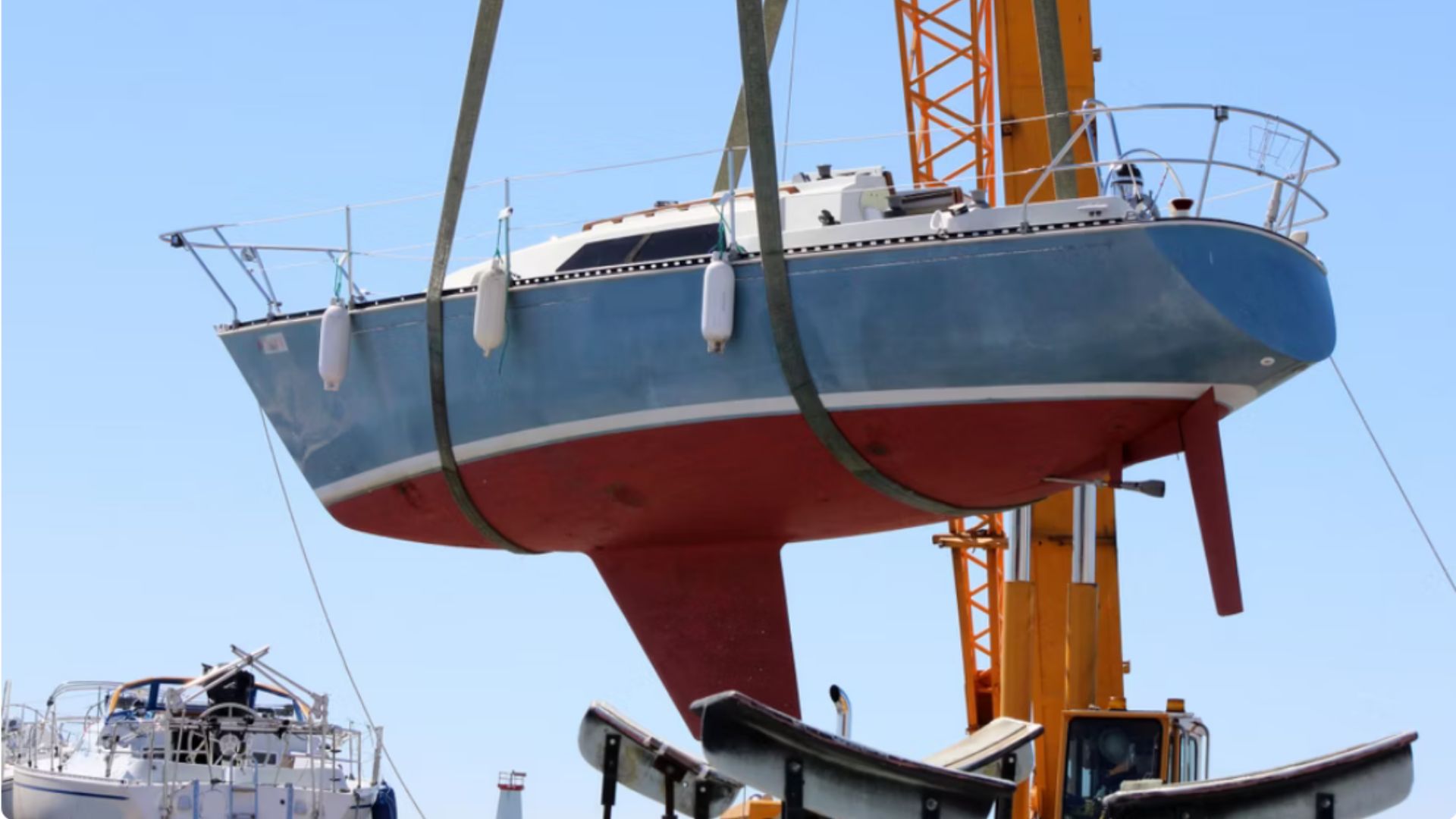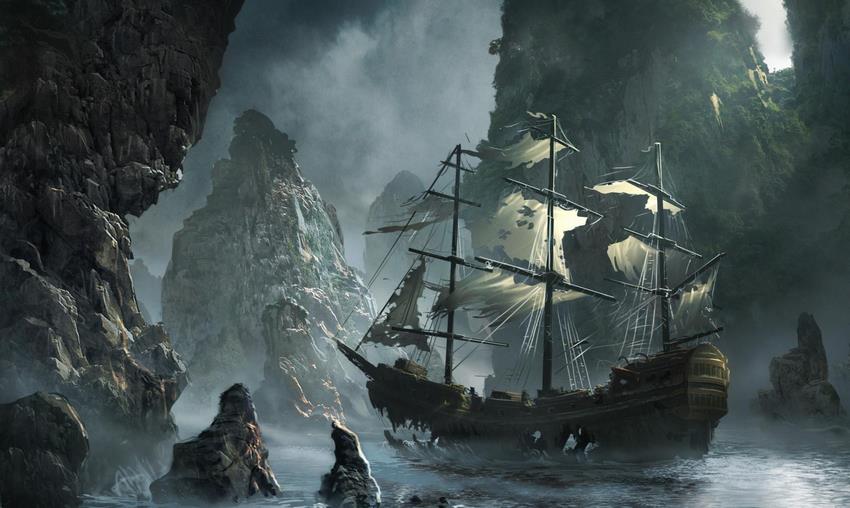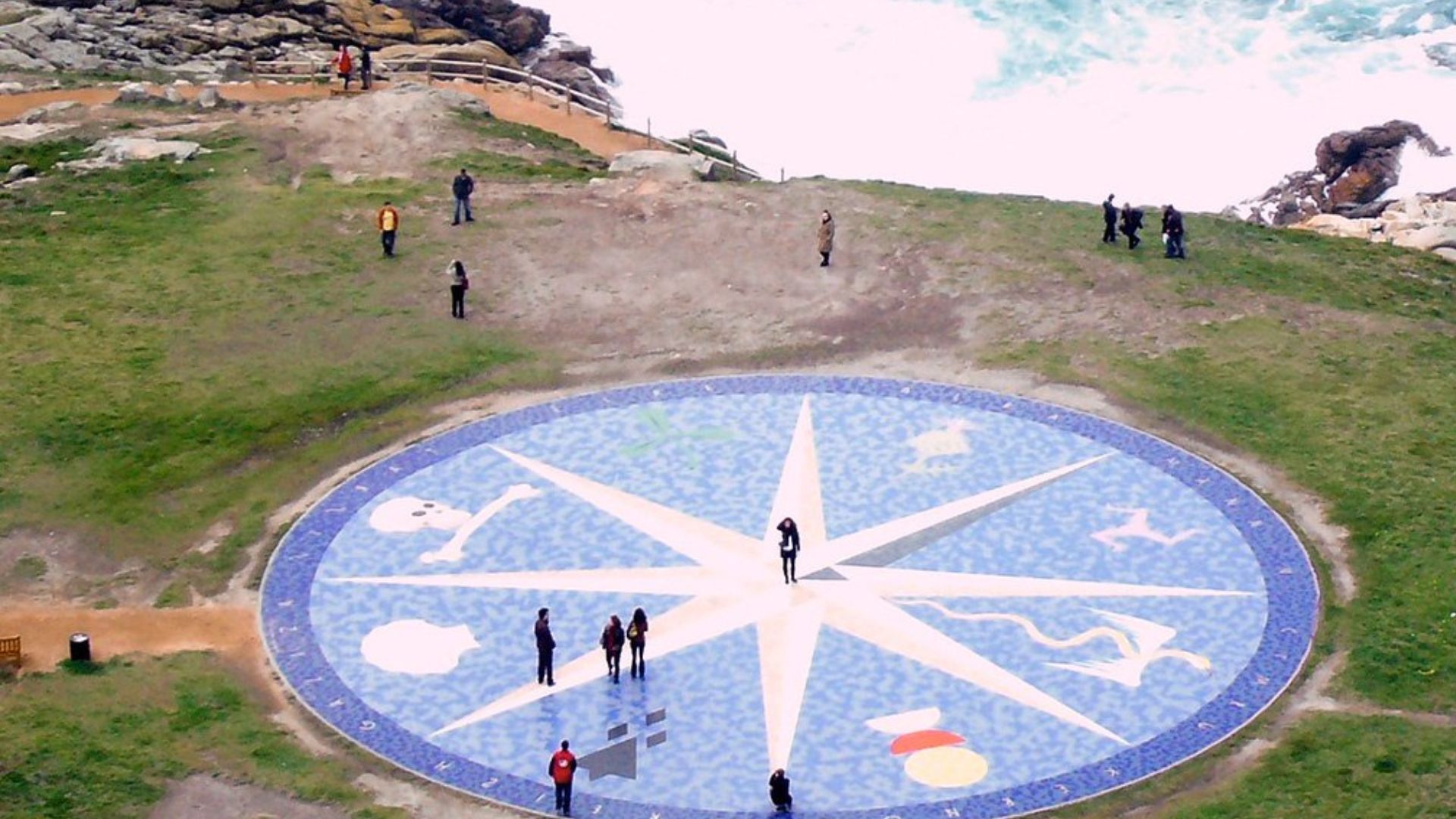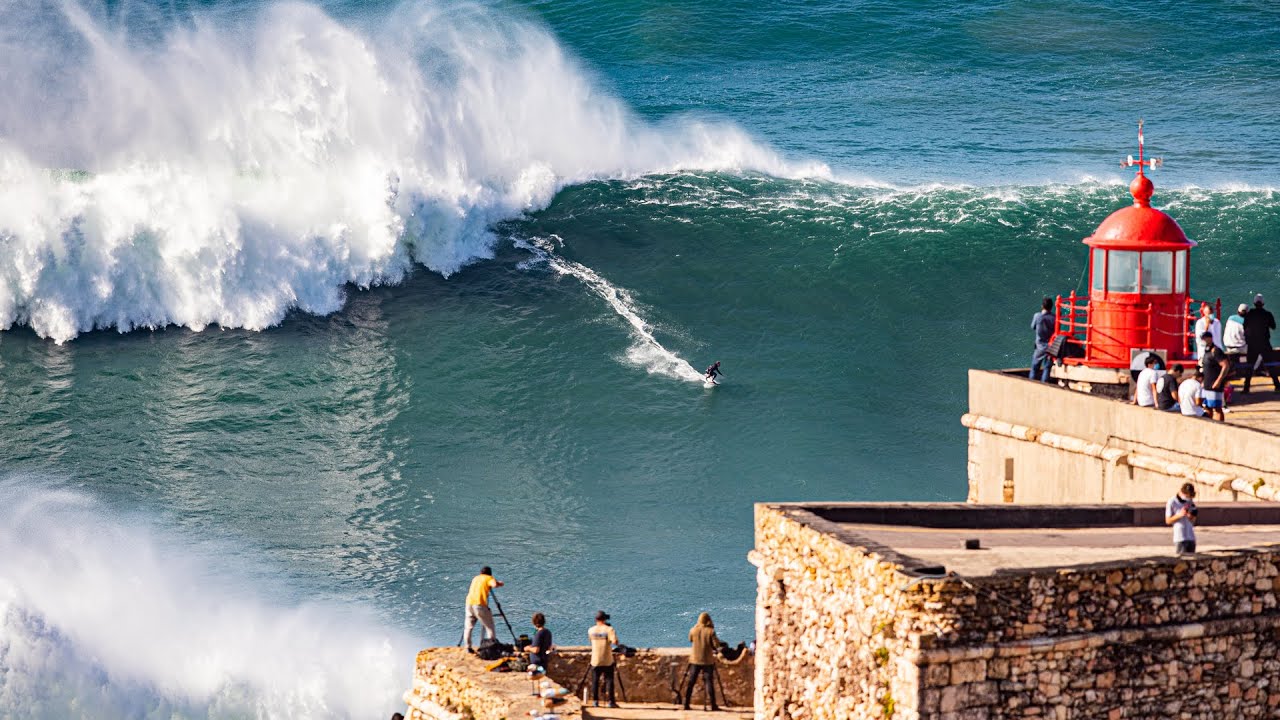
The 20 Most Famous and Impactful Shipwrecks in History
Throughout the centuries, the history of navigation has been marked by numerous famous shipwrecks that have left a lasting impact, not only because of the magnitude of human loss but also due to the circumstances surrounding them.
Meaning of shipwreck
A maritime accident in which a vessel is severely damaged or destroyed, usually as a result of collisions, structural failures, bad weather conditions, human errors, or attacks, causing the ship to sink partially or completely. In many cases, the sinking can lead to loss of life, material goods, and cause spills of harmful substances in the marine environment.
The term "shipwreck" is also used to describe the remains of the sunken vessel, known as wreckage, which remains on the seabed or drifts afloat. These sunken vessels often become important objects of archaeological study or destinations for divers.
Below, we explore the 20 most impactful shipwrecks, describing what makes them unique, their significance in maritime history, and whether they have been immortalized in films or books.
1. Titanic (1912)
The RMS Titanic is undoubtedly the most famous shipwreck in history. On its maiden voyage from Southampton to New York, the majestic ocean liner struck an iceberg on the cold night of April 14, 1912, causing it to sink in the early hours of April 15. With over 1,500 victims, the Titanic tragedy revealed the lack of lifeboats and the arrogance of considering the ship "unsinkable." This disaster led to crucial changes in safety regulations, including the creation of the International Convention for the Safety of Life at Sea (SOLAS).
- Causes: Collision with an iceberg.
- Number of victims: 1,500+
- Notable film: Titanic (1997), directed by James Cameron.
2. MV Doña Paz (1987)
The MV Doña Paz is remembered as the worst maritime disaster in peacetime. On the night of December 20, 1987, the Filipino ferry collided with the oil tanker Vector in the Tablas Strait. The Vector was carrying gasoline, which caused a massive explosion and fire that engulfed both ships. The tragedy left more than 4,000 dead, many of whom were not listed on the passenger manifest, highlighting severe overloading and control issues in the region's ferries.
- Causes: Collision with an oil tanker and explosion.
- Number of victims: 4,000+
- Documentary: Asia's Titanic: The Doña Paz (National Geographic).
3. RMS Lusitania (1915)
The RMS Lusitania was a luxurious British ocean liner torpedoed by a German submarine U-20 on May 7, 1915, during World War I, off the coast of Ireland. Of the nearly 2,000 passengers on board, 1,198 died. This act was pivotal in shifting public opinion against Germany and was a factor that eventually led the United States into the war. Additionally, controversy remains about whether the Lusitania was carrying war munitions.
- Causes: Impact of a German torpedo.
- Number of victims: 1,198
- Notable book: Dead Wake: The Last Crossing of the Lusitania (Erik Larson).
4. MS Estonia (1994)
The sinking of the ferry MS Estonia occurred on September 28, 1994, in the Baltic Sea, becoming one of the deadliest shipwrecks in European waters in the 20th century. The ship, traveling from Tallinn to Stockholm, suffered the failure of its bow visor due to the force of the sea, allowing water to flood the car deck. The ferry sank in less than an hour, taking the lives of 852 people. Only 137 survived. This disaster led to significant reforms in ferry safety.
- Causes: Structural failure of bow visors.
- Number of victims: 852
- Notable documentary: The Estonia Disaster (Sveriges Television).
5. SS Andrea Doria (1956)
The SS Andrea Doria was an Italian ocean liner considered one of the most luxurious ships of its time. On July 25, 1956, during a voyage from Genoa to New York, it collided with the Swedish ship MS Stockholm in the fog off the coast of Nantucket. Although the number of victims was relatively low (46 deaths), the sinking of the Andrea Doria generated much media attention due to the ship's status and the complexity of the evacuation. Its sinking also revealed failures in navigation regulations and crew training.
- Causes: Collision with MS Stockholm.
- Number of victims: 46
- Notable book: Alive on the Andrea Doria! (Pierette Domenica Simpson).
6. Costa Concordia (2012)
Another famous shipwreck is the Costa Concordia, which caused worldwide shock. On January 13, 2012, the giant cruise ship ran aground near the Italian island of Giglio after the captain performed a dangerous maneuver to approach the coast. The ship struck a reef and began to list, resulting in the deaths of 32 people. Subsequent investigations revealed that the evacuation was chaotic and that the captain had abandoned the ship before the evacuation was completed, resulting in a court sentence.
- Causes: Human error and captain's negligence.
- Number of victims: 32
- Notable documentary: Costa Concordia: Chronicle of a Disaster (2012).
7. MV Goya (1945)
The MV Goya was a German troop transport used during the evacuation of civilians and soldiers in the final days of World War II. On April 16, 1945, it was sunk by a Soviet submarine in the Baltic Sea. Of the more than 7,000 people on board, only about 200 survived. It is considered one of the deadliest sinkings in history, surpassing even the Titanic in terms of the number of victims.
- Causes: Torpedo from a Soviet submarine.
- Number of victims: 7,000+
8. SS Mont-Blanc (1917)
The SS Mont-Blanc did not sink at sea, but its explosion is considered one of the greatest maritime tragedies. On December 6, 1917, the ship, carrying a cargo of explosives, collided with the Norwegian ship Imo in the port of Halifax, Canada. The resulting explosion was devastating, destroying much of the city and killing more than 2,000 people. This incident led to new regulations on the transport of hazardous materials in ports.
- Causes: Collision and explosion of flammable cargo.
- Number of victims: 2,000+
- Notable book: Curse of the Narrows (Laura M. MacDonald).
9. Sultana (1865)
The Sultana was a steamboat that exploded on the Mississippi River on April 27, 1865. It was overloaded with freed soldiers from Civil War prisoner camps. The ship's boilers exploded due to a combination of overloading and poor prior repairs, killing more than 1,800 people. This incident was one of the most famous shipwrecks of the time but was overshadowed by the assassination of President Abraham Lincoln, though it remains one of the worst maritime disasters in U.S. history.
- Causes: Boiler explosion and overloading.
- Number of victims: 1,800+
- Notable book: Sultana (Alan Huffman).
10. SS Morro Castle (1934)
The SS Morro Castle was a passenger ship operating between New York and Havana. On September 8, 1934, a fire broke out aboard while the ship was off the coast of New Jersey. Despite being close to land, 137 people died in the disaster. The subsequent investigation revealed numerous fire safety failures on board, leading to significant changes in passenger ship regulations.
- Causes: Fire aboard.
- Number of victims: 137
- Notable book: Inferno at Sea (1959).
11. General Slocum (1904)
The General Slocum was a steamboat used for excursions in New York. On June 15, 1904, the ship suffered a fire while sailing on the East River. Although the ship was equipped with life jackets and boats, most were in deplorable condition, contributing to the high death toll. Of the more than 1,300 people on board, more than 1,000 perished. This shipwreck led to a major overhaul of passenger ship safety regulations.
- Causes: Fire and faulty equipment.
- Number of victims: 1,000+
- Notable book: Ship Ablaze (Edward T. O'Donnell).
12. MV Wilhelm Gustloff (1945)
The MV Wilhelm Gustloff was a German ocean liner sunk by a Soviet submarine on January 30, 1945, while evacuating civilians and soldiers during World War II. It is estimated that between 6,000 and 9,000 people died, making it the deadliest shipwreck in history. The ship was extremely overloaded, complicating evacuation and rescue efforts.
- Causes: Torpedo from a Soviet submarine.
- Number of victims: 6,000-9,000
- Notable book: Salt to the Sea (Ruta Sepetys).
13. HMS Birkenhead (1852)
The sinking of the HMS Birkenhead is known for the bravery of its crew. The ship, transporting British troops and their families to South Africa, struck rocks near Gansbaai on February 26, 1852. Instead of trying to save themselves, the soldiers held their positions to allow the women and children to be evacuated first. This act of discipline and military courage gave rise to the so-called "Birkenhead code," where men sacrificed their lives to save the most vulnerable.
- Causes: Collision with rocks.
- Number of victims: 400+
14. USS Indianapolis (1945)
The USS Indianapolis was a United States Navy cruiser that delivered the components of the "Little Boy" atomic bomb to the Tinian base in the Pacific. Shortly afterward, on July 30, 1945, it was torpedoed by a Japanese submarine and sank in just 12 minutes. Of the 1,196 crew members, approximately 300 died in the attack, but the remaining 900 were left adrift at sea. Only 317 survived after days adrift facing shark attacks.
- Causes: Japanese submarine torpedo.
- Number of victims: 800+
- Notable film: USS Indianapolis: Men of Courage (2016).
15. SS Eastland (1915)
The SS Eastland was an excursion ship carrying workers and their families to an event on Lake Michigan. On July 24, 1915, while anchored in the Chicago River, the ship capsized suddenly, trapping hundreds of people below deck. The ship's defective design and overloading were the main causes of the disaster. 844 people died in the sinking.
- Causes: Instability and overloading.
- Number of victims: 844
16. HMS Royal George (1782)
The HMS Royal George was one of the largest ships of its time. On August 29, 1782, while anchored at Portsmouth harbor for repairs, the ship began to list and eventually sank. Poor maintenance practices and the overloading of the ship were the main causes. More than 800 people died, including women and children visiting the ship.
- Causes: Overweight and poor maintenance.
- Number of victims: 800+
17. SS Valencia (1906)
The SS Valencia was an ocean liner that wrecked off the west coast of Canada on January 22, 1906. During a storm, the ship ran aground on a reef, and due to the harsh conditions, rescue attempts failed. Of the 173 passengers, only 37 survived.
- Causes: Storm and collision with a reef.
- Number of victims: 136
18. Batavia (1629)
The Batavia was a ship of the Dutch East India Company that wrecked on the Houtman Abrolhos islands, off the coast of Australia, in 1629. Although most passengers survived the shipwreck, what followed was a series of tragic events, including a mutiny that resulted in the murder of more than 100 people.
- Causes: Collision with a reef.
- Number of victims: N/A (more than 100 murdered after the shipwreck)
- Notable book: Batavia's Graveyard (Mike Dash).
19. Vasa (1628)
The Vasa was a Swedish warship that sank minutes after setting sail on its maiden voyage on August 10, 1628. The ship tipped over and sank in Stockholm harbor due to poor design. Its construction had been rushed, with too many cannons on the upper deck, which caused its instability.
- Causes: Defective design and instability.
- Number of victims: 30
20. SS Mont-Blanc (1917)
The SS Mont-Blanc caused one of the largest explosions in history when it collided with the Imo in Halifax harbor. The explosion killed more than 2,000 people, destroying much of the surrounding city. This shipwreck has been the subject of several books, such as "Curse of the Narrows" (2005), which describes the explosion and its effects on the city of Halifax.
- Causes: Collision and explosion of flammable cargo.
- Number of victims: 2,000+
- Notable book: Curse of the Narrows (Laura M. MacDonald).
Summary of the worst shipwrecks in history
| Ship Name | Year | Location | Number of Victims | Causes of Shipwreck |
| Costa Concordia | 2012 | Italy | 32 | Human error and captain's negligence |
| MS Estonia | 1994 | Baltic Sea | 852 | Structural failure of the bow visor |
| MV Doña Paz | 1987 | Philippines | 4,000+ | Collision with an oil tanker |
| RMS Titanic | 1912 | North Atlantic | 1,500+ | Collision with an iceberg |
| SS Andrea Doria | 1956 | United States | 46 | Collision with another ship |
| SS Mont-Blanc | 1917 | Canada | 2,000+ | Explosion of flammable cargo after a collision |
| USS Indianapolis | 1945 | Pacific | 800+ | Japanese submarine torpedo |
| MV Wilhelm Gustloff | 1945 | Baltic Sea | 6,000-9,000 | Soviet submarine torpedo |
| SS Eastland | 1915 | United States | 844 | Instability and overloading |
| SS Morro Castle | 1934 | United States | 137 | Fire aboard |
| General Slocum | 1904 | United States | 1,000+ | Fire aboard |
| RMS Lusitania | 1915 | North Atlantic | 1,198 | German submarine torpedo |
| Sultana | 1865 | Mississippi, USA | 1,800+ | Boiler explosion and overloading |
| HMS Birkenhead | 1852 | South Africa | 400+ | Collision with rocks |
| HMS Royal George | 1782 | England | 800+ | Overloading and poor maintenance |
| SS Valencia | 1906 | Canada | 136 | Storm and collision with a reef |
| Batavia | 1629 | Australia | N/A | Collision with a reef |
| Vasa | 1628 | Sweden | N/A | Defective design and instability |
Famous shipwrecks in history have not only marked great human tragedies but have also driven crucial improvements in maritime safety. From the famous Titanic to lesser-known disasters like the Batavia, each reminds us of the ocean's relentless power and the consequences of human and technical errors.
Many of these shipwrecks have been immortalized in books, movies, and documentaries, ensuring that their stories and lessons remain relevant. These tragedies are a reminder of the importance of respecting and being prepared to face the challenges of the sea.













_v2.svg)
_v2.svg)









_v2.svg)


